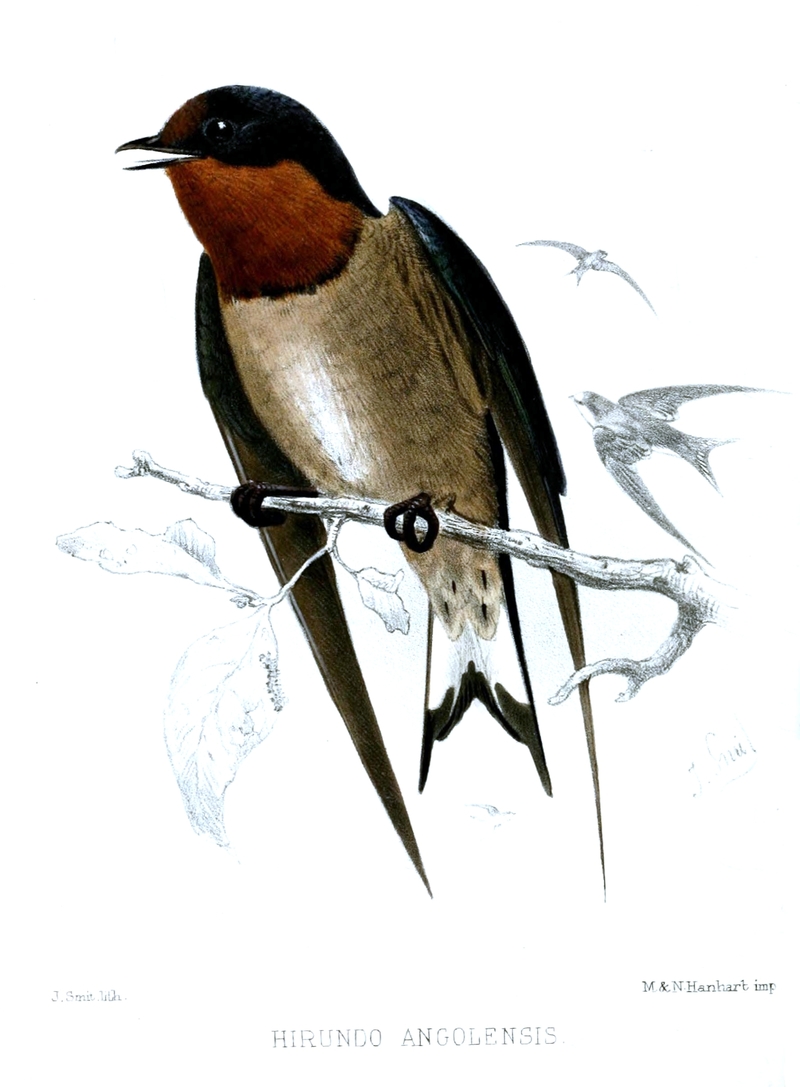|
| Query: Small blue | Result: 639th of 890 | |
Hirundo angolensis (Angola swallow)
| Subject: | Hirundo angolensis (Angola swallow)
| | Poster: | Wiki Photos (---@---.---)
| |

| Resolution: 1777x2415
File Size: 910760 Bytes
Upload Date: 2024:02:13 19:39:41
|
Hirundo angolensis
Date 1869
Source Proceedings of the Zoological Society of London 1869 (https://archive.org/stream/proceedingsofgen69zool#page/n671/mode/1up)
Author Joseph Smit (1836–1929)
Source: https://commons.wikimedia.org/wiki/File:HirundoAngolensisSmit.jpg
Hirundo angolensis - Angola swallow, Angolan swallow, rufous-chested swallow
The Angola Swallow is a small bird that belongs to the swallow family, Hirundinidae. It has a blue back, a chestnut forehead and throat, and a gray belly. It lives in various open habitats in Africa, such as grasslands, wetlands, and farms. It feeds on flying insects and breeds in mud nests. It is also known as the Angolan Swallow or the Rufous-chested Swallow. It is found in Angola, Burundi, Democratic Republic of the Congo, Gabon, Kenya, Malawi, Namibia, Rwanda, Tanzania, Uganda, and Zambia.
Order: Passeriformes
Family: Hirundinidae
Genus: Hirundo
Species: Hirundo angolensis Barboza du Bocage, 1868 |
^o^
Animal Pictures Archive for smart phones
^o^
|
|